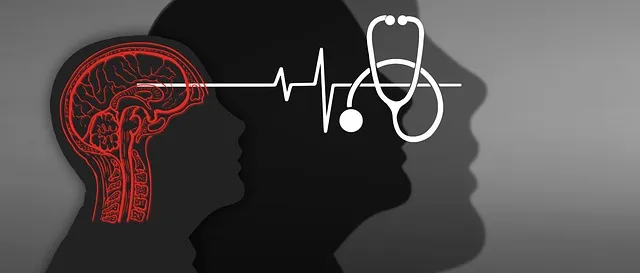Risk assessment and harm minimization are core elements of Kaiser Permanente behavioral health services Golden, focusing on identifying and mitigating risks while promoting positive outcomes. Through evidence-based practices, early intervention, and tailored mental health education, the program empowers individuals to build emotional intelligence and resilience. A robust risk management plan includes detailed assessments, prioritization of hazards, staff training, support services, and communication systems, ensuring a swift and effective response. Continuously updating plans based on trends, research, and feedback is vital, integrating crisis intervention guidance and positive thinking to empower clients in managing stressors, ultimately enhancing Kaiser Permanente behavioral health services Golden's mission to improve community well-being.
“Risk assessment and harm minimization are vital components in ensuring the safety and well-being of individuals, especially within behavioral health services. This article explores a structured approach to managing risks, drawing insights from the Kaiser Permanente model, renowned for its successful implementation in Golden’s behavioral health services. We’ll delve into the key principles, including understanding risk assessment as a foundational practice, and outline critical components of comprehensive risk management plans. Furthermore, we’ll discuss strategies for seamless integration and continuous improvement.”
- Understanding Risk Assessment: A Foundation for Safe Services
- The Kaiser Permanente Model: Behavioral Health Harm Minimization
- Key Components of a Comprehensive Risk Management Plan
- Implementation and Continuous Improvement Strategies
Understanding Risk Assessment: A Foundation for Safe Services

Risk assessment is a cornerstone of providing safe and effective Kaiser Permanente behavioral health services. It involves a systematic process of identifying potential hazards and evaluating their likelihood and potential impact on clients’ well-being. This foundation is crucial for developing robust harm minimization plans, ensuring that Golden opportunities for positive outcomes are maximized while mitigating risks to the lowest possible level.
By integrating self-care practices and mental health education programs design tailored to individual needs, Kaiser Permanente behavioral health services can foster emotional intelligence—a key component in empowering clients to navigate challenges effectively. This holistic approach not only promotes resilience but also contributes to a comprehensive strategy aimed at enhancing client safety and overall well-being.
The Kaiser Permanente Model: Behavioral Health Harm Minimization

The Kaiser Permanente Model for Behavioral Health Harm Minimization serves as a beacon for Golden’s mental health services, focusing on proactive measures to safeguard and enhance mental wellness. This approach prioritizes early intervention and evidence-based practices to address emerging issues before they escalate. By integrating harm minimization into their care framework, Kaiser Permanente empowers individuals to develop coping skills tailored to their unique challenges.
This model encourages a holistic view of behavioral health, recognizing that self-esteem improvement is intrinsically linked to overall mental wellness. Through tailored interventions, the program equips participants with the tools to navigate life’s complexities, fostering resilience and promoting positive outcomes. The Kaiser Permanente Behavioral Health Services in Golden are designed to be inclusive and accessible, ensuring individuals receive the support they need for a brighter, more balanced future.
Key Components of a Comprehensive Risk Management Plan

A comprehensive risk management plan for Kaiser Permanente behavioral health services Golden should encompass several key components to effectively mitigate potential risks and promote a safe environment. Firstly, conducting a thorough risk assessment is imperative. This involves identifying all possible hazards, whether they be environmental, procedural, or related to client interactions. Once identified, these risks should be prioritized based on their likelihood and potential impact.
The plan must then include tailored strategies for harm minimization. This could involve implementing safety protocols, providing staff training on crisis intervention and de-escalation techniques, and offering a range of support services like Emotional Healing Processes, Coping Skills Development programs, and Mental Wellness Coaching to empower individuals and enhance their resilience. A robust communication system should also be established to ensure swift response and coordination among all stakeholders, ultimately fostering a nurturing and supportive environment for Golden’s behavioral health services.
Implementation and Continuous Improvement Strategies

Implementing effective risk assessment and harm minimization strategies is a dynamic process, much like the journey toward mental wellness advocated by Kaiser Permanente behavioral health services Golden. It’s not merely a one-time task but an ongoing commitment to continuous improvement. Organizations should foster a culture of proactive monitoring and adaptation, regularly reviewing and updating their plans based on emerging trends, new research findings, and feedback from stakeholders, including clients and healthcare professionals. This iterative approach ensures that strategies remain relevant and effective in addressing evolving risks.
Positive thinking and crisis intervention guidance play pivotal roles in this process. By integrating these principles into risk assessment protocols, organizations can foster a supportive environment that empowers individuals to manage stressors and make informed decisions. Regular staff training on crisis intervention guidance techniques further strengthens the system, enabling healthcare providers to offer timely assistance and mitigate risks proactively. This holistic approach aligns with Kaiser Permanente’s mission to improve the overall well-being of its community, creating a safer and more supportive ecosystem.
Risk assessment and harm minimization planning are essential components for providing safe and effective Kaiser Permanente behavioral health services in Golden. By understanding the foundations of risk assessment, adopting models like the Kaiser Permanente approach, and implementing comprehensive risk management plans, healthcare providers can ensure a robust framework to mitigate potential harms. Continuous improvement strategies are vital to staying agile and responsive to changing risks, ultimately enhancing patient safety and care quality.






